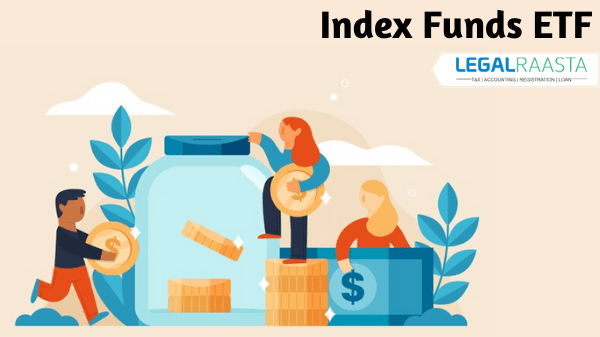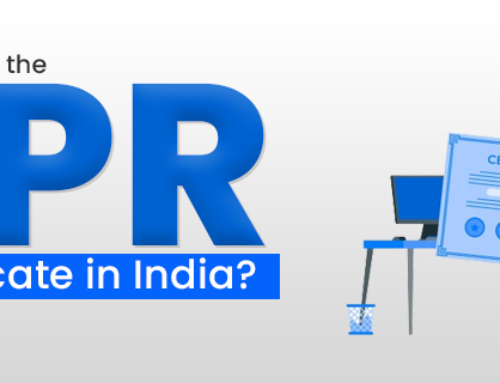An index funds ETF is a stock or bond portfolio that simulates the financial market index composition and performance. Also, these funds have lower costs and fees than the funds that are actively managed and are pursuing a passive strategy for investment. These funds seek to match market risk and return, based on the theory that the market will exceed any single investment in the lengthy phase.
What is Index Fund?
Contents
- What is Index Fund?
- How do Index Funds ETFs function?
- Who should invest in an Index Fund ETF?
- Your 3-step process of investing in index funds
- 1. Select an index
- 2. Choose the right bag for your reference
- 3. Buy stock index shares
- Why invest in index funds ETF?
- Index funds ETFs: Tips of Investment
- What are the risks associated with Index Funds?
- Differences between index funds ETFs
- India’s Best Index Fund
- Conclusion
An index fund is a type of mutually beneficial fund or ETF with a portfolio built to match or track financial market index components such as a Standard & Poor’s 500 index (S&P 500). A mutual index fund is said to provide wide market exposure, low expenditure, and low turnover in portfolios. These funds follow their benchmark index irrespective of the market situation. Index funds, such as retirement benefit accounts (IRAs) and 401(k), are generally regarded as ideal core portfolio holdings for pension account. Advisors recommended later years’ index funds as a haven for savings. It makes more sense for the average investor to buy all S&P 500 companies at low cost and an index fund than to collect individual inventories for the investment.
How do Index Funds ETFs function?
Say that the NSE Nifty Index is being tracked by an Index Fund. Consequently, this fund will have a similar 50 inventory portfolio. Equity-related instruments can be included in the index together with bonds. The index fund guarantees investment in all the securities tracked by the index.
A passively managed index fund tries to match the results offered by the underlying index, while an actively managed mutual fund attempts to exceed its underlying benchmark.
Who should invest in an Index Fund ETF?
The results are proximately similar to those offered by the index as Index Funds track a market index. Investors, therefore, prefer these funds to predict profits and to invest in equity markets without taking a lot of risks. The fund manager changes the composition of the portfolio by evaluating the possible results of the underlying securities in an active fund. This adds to the portfolio an element of risk. Since index funds are managed passively, there are no such risks. The returns will, however, not be much higher than the index. For investors exploring more powerful returns, actively maintained equity funds are a more suitable choice.
Your 3-step process of investing in index funds
1. Select an index
There are hundreds of different indicators that you can track using the index currency. The most popular indicator is the S&P 500 Index, which places the top 500 companies in the U.S. stock market.
In addition to these comprehensive indicators, you can find sector-specific sector indicators, country indicators that target stocks in single countries, style indicators that emphasize fast-growing companies or stocks, and other indicators that limit their investment in their screening programs.
2. Choose the right bag for your reference
Once you have selected an index, you can find at least one consecutive reference bag. With popular indicators like the S&P 500, you may have twelve or more options all tracking the same index.
If you have a wallet option for more than one of your selected indexes, you will want to ask some basic questions. First of all, which index bag best tracks index performance? Second, which index bag has the lowest cost? Third, are there any restrictions or limitations on the index that prevent you from investing in it? And finally, does the fund provider have some index funds that you are interested in using? The answers to those questions should make it easy for you to select the right index bag for you.
To buy shares in your chosen index fund, you can open an account directly with the mutual fund company that provides this fund. Alternatively, you can open a broker-dealer account that allows you to buy and sell shares of the index fund you are interested in.
Also, in deciding which method is best for you to buy shares of your reference wallet, it pays to look at costs and features. Some retailers charge extra money for their customers to buy index fund shares, making it cheaper to go directly to the index fund company to open a fund account. However, most investors wish to retain all their funds in one trading account. If you think you will be investing in a variety of different brands offered by different fund managers, a trading option could be your best way to combine all your investments under one account.
Why invest in index funds ETF?
Investing in index funds is one of the coolest and most active ways for investors to create wealth. By simply following the amazing performance of financial markets over time, index funds can turn your investments into a big nest egg over time – and best of all, you don’t have to be a stock market expert to do so.
Investors find the index funds useful especially for several reasons:
- Reduce time spent researching individual stocks. Instead, you can rely on the portfolio manager of the fund to invest in an index that already includes the shares you want to invest in.
- You can invest with minimal risk. Most indicators include large or large stocks, as well as other investments, and diversification leaves you more likely to lose out if something bad happens to one or two companies in the index.
- Index currencies are available in a variety of investments. You can buy stock index funds and bond index funds, which cover two major components of most people’s investment strategies. But you can also buy high-quality stocks that focus on specific segments of the financial markets.
- It’s too cheap. Index currencies are often more expensive than other methods such as actively managed funds. That’s because the indicator fund manager just has to buy shares or other investments in the index – you don’t have to pay them to try to come up with their own shares.
- You will pay less tax. Indicator funds are more efficient with tax compared to many other investments. For example, index funds do not have to make as much buying and selling of their holdings as actively regulated funds, so index funds avoid generating a major return on your tax bill.
- It is very easy to stick to your investment plan. If you use index money, you can automatically invest every month and ignore the ups and downs, making sure you will participate in the long-term growth of the market.
Index funds ETFs: Tips of Investment
If the idea of investing in Index funds is attractive, follow the tips below before investing:
- If you are planning to invest in Index funds, it is best to have a wide range of Index funds. This means it has to cover most of the market. The Nifty top 100 is one such example.
- If you are just starting out investing, Index wallets are a good idea, to start with. It will provide you with a comprehensive portfolio presentation at a low cost.
- Some of these funds are available as exchange funds. The main difference between ETFs and mutual funds is that ETFs are listed on the stock exchange list as shares. This makes it easier to buy and sell stocks. An investor can use his Demat account and trading account to invest.
- Each stock has a diverse weight in the index. Index finance portfolio is also distributed in the same way. For example, if Reliance Industries weighs 10% in a portfolio, a fund in the same index will share 10% of the portfolio. These portfolio types are ideal for people who do not wish to risk a fund manager.
What are the risks associated with Index Funds?
As with any investment option, index money is also completely risky. The Index bags contain the same safety and security risks like the following index. Index bags are also subject to the following risks:
- Lack of flexibility: Compared to non-reference currencies, index prices are relatively unchanged in compliance with inflation.
- Trace error: The index bag may not track and duplicate its full index operation. For example, if a fund has invested only a collateral sample in a market index, it is less likely that the fund’s performance will match the performance of the index.
- Disadvantages: Due to factors including fees, costs, trading costs, and tracking error, the index fund can perform well in its index.
- No market hitting: Due to its nature, investment in index money does not get a chance to hit the market as it does with a well-managed fund.
- Low growth potential: Index funds only invest in stocks of indexed companies that have left their growth years. Therefore, investments in the index fund do not benefit from the growth of small companies.
- Most Expensive Estimates: The companies in the index are already well established and are actually marketed, making their shares more expensive. In addition, anyone who invests in the index will receive their shares at a much higher cost, than ever before.
Differences between index funds ETFs
There are a few significant differences between index currencies and exchange rates. Let’s take a look at the comparisons between index funds ETFs:
- If you decide to purchase a reference fund, it will be added to the assets under the management (AUM) of this particular fund. Currently, when you purchase an ETF, it does not include AUM. You can buy or sell this bag only if a partner is involved in the sale. In such cases, investing in the market is important to any ETF you choose.
- The cost of the reference fund is much higher than that of the ETF. However, as the index fund is bought and traded only on the exchange as other stocks, the investor will need to keep other funds and charges in mind such as legal costs, Securities Transaction Tax (STT), and brokerage in mind. You will receive these payments again.
- Indicator funds require a high balance to take care of redemption. In addition to market risk known as Beta, there is another risk known as risk tracking error. This risk is more common in index funds compared to ETFs.
- Index funds are mutual funds. Therefore, they can be purchased and sold only at the end of the day (EOD) NAV and can only be purchased during trading time. In the meantime, ETFs can be bought and sold at a price based on the Nifty fraction.
- If you receive shares of ETFs, you will receive them credited to your registered bank account. Alternatively, with reference funds, you can opt for a separate investment plan or growth plan. Here, your assignments will go directly into units.
India’s Best Index Fund
Before investing, a fund must be analyzed and thoroughly explored. The Top Index Fund is determined according to your needs by several qualitative and quantitative factors.
Depending on its performance over the past 5 years, the following are the top five index funds in India. Based on the holding time you want, you can select different funds.
- HDFC Index Fund-Sensex(G)
- UTI Nifty Index Fund-Reg(G)
- ICICI Pru Nifty Next 50 Index Fund(G)
- HDFC Index Fund-NIFTY 50 Plan(G)
- Reliance Index Fund – Sensex Plan(G)
Conclusion
Many believe Index funds in India will take the time to make themselves popular. Index funds generally generate lower returns and investors, therefore, try to avoid these funds. However, investors who want to minimize risks can make a good investment choice. Now that you know about the advantages of index funds, you get started early on and you have tips to invest in index funds.
Also Read,
NVP: Net Present Value And How To Calculate It?
Indian Trusts Act – Objectives, Registration of trust, Formation & Taxation
Fundraising for companies






